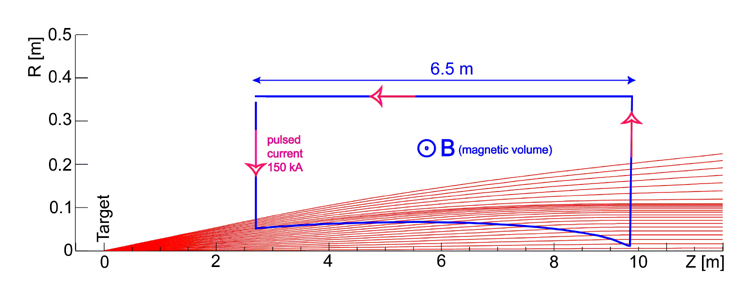|
Particles emerging from a
source (the target) with a given momentum and angular distribution can be deviated into a
parallel beam by means of the magnetic volume provided in the horn. This principle is
illustrated below for 35 GeV positively charged particles leaving the CNGS target.
Those particles with very
small angle at production will never cross the inner conductor into the magnetic volume
and will therefore continue in a straight line. Particles with somewhat larger production
angles travel inside the magnetic volume, the more so for the larger angles. Within a
given range of angles, these particles all form a parallel beam at the exit of the horn.
At even larger production angles, the field in the horn is insufficient and the particles
are not deviated enough.
In order to deviate a larger
number of particles produced at various energies and angles, a
two-horn system, sometimes called horn and reflector, is needed.
|
